Search
Guideline 12.1 – Paediatric Basic Life Support (PBLS) for health professionals
Next review July 2024
Summary

ANZCOR Guidelines 12.1 to 12.5 are provided to assist health professionals in the resuscitation of children. Differences from the adult and newborn guidelines reflect differences in the causes of cardiorespiratory arrest in, and anatomy and physiology of newborns, older infants, children and adults. These guidelines draw from the Paediatric Life Support 2020 International Consensus on Cardiopulmonary Resuscitation and Emergency Cardiovascular Care Science with Treatment Recommendations1 the development of which included representation from ANZCOR. The 2020 European Resuscitation Council Paediatric Life Support guidelines2, 2020 American Heart Association Guidelines for Cardiopulmonary Resuscitation and Emergency Care3, previous Paediatric Life Support International Consensus on Cardiopulmonary Resuscitation and Emergency Cardiovascular Care Science with Treatment Recommendations4-6 statements and local practices have also been taken into account.
ANZCOR Guideline 12.1 focuses on provision of paediatric basic life support (PBLS) by health professionals responsible for the care of infants and children working in healthcare settings (pre-hospital or hospital). It recognises the importance of immediate provision of BLS in the collapsed child while waiting for resuscitative equipment and drugs to arrive, which then allow provision of paediatric advanced life support (PALS) as outlined in ANZCOR guideline 12.2. This guideline should be read in conjunction with the other paediatric guidelines (ANZCOR Guidelines 12.2 to 12.5) and the general life support guidelines suitable for all age groups and environments (ANZCOR Guidelines 2 to 8).
To whom does this guideline apply?
This guideline applies to infants and children needing resuscitation but excludes resuscitation of newborns (see 12.1.2 for definitions).
Who is the audience for this guideline?
This guideline is intended for health professionals and those who respond to paediatric emergencies who have received training in PBLS practices. Lay rescuers and health professionals trained only in general basic life support (BLS) practices should refer to ANZCOR Guidelines 2 to 8 for general basic life support procedures suitable for all age groups. Untrained rescuers should call emergency services and follow instructions from emergency dispatchers.
Summary of Recommendations
The Australian and New Zealand Committee on Resuscitation (ANZCOR) makes the following recommendations:
- ANZCOR suggests that health professionals working in healthcare settings where they are responsible for the care of infants and children should be trained in PBLS. Lay persons and other health professionals should be trained in general BLS [Good Practice Statement]
- ANZCOR recommends that rescuers provide ventilations and chest compressions for pediatric in-hospital cardiac arrest (IHCA) and out-of-hospital cardiac arrest (OHCA). If rescuers are unable or unwilling to provide ventilations, they should at least perform chest compressions [CoSTR 2015, strong recommendation, low-quality evidence].
- ANZCOR suggests that in infants and children who are unresponsive and not breathing normally, healthcare providers should begin CPR unless they can definitely palpate a pulse within 10 seconds [CoSTR 2010, LOE III].
- ANZCOR suggests that rescuers compress the chest by at least one third the anteroposterior dimension, or approximately 4 cm in an infant and 5cm in a child [CoSTR 2015, weak recommendation, very low-quality evidence].
Abbreviations
|
Abbreviation |
Meaning/Phrase |
|
AED |
automated external defibrillator |
|
ALS |
advanced life support |
|
ANZCOR |
Australian and New Zealand Committee on Resuscitation |
|
ARC |
Australian Resuscitation Council |
|
BLS |
basic life support |
|
BVM |
bag-valve-mask |
|
CoSTR |
Consensus on Science with Treatment Recommendations |
|
CPR |
cardiopulmonary resuscitation |
|
ETT |
endotracheal tube |
|
IHCA |
in-hospital cardiac arrest |
|
ILCOR |
International Liaison Committee on Resuscitation |
|
IO |
intraosseus |
|
IV |
intravenous |
|
LMA |
laryngeal mask airway |
|
LOE |
Level of Evidence |
|
NZRC |
New Zealand Resuscitation Council |
|
OHCA |
out-of-hospital cardiac arrest |
|
PALS |
paediatric advanced life support |
|
PBLS |
paediatric basic life support |
|
PEA |
pulseless electrical activity |
|
PLS |
paediatric life support |
|
pVT |
pulseless ventricular tachycardia |
|
RCT |
randomised control trial |
|
ROSC |
return of spontaneous circulation |
|
SGA |
supraglottic airway |
|
VF |
ventricular fibrillation |
Introduction

This guideline is provided by ANZCOR to assist health professionals who have been trained in paediatric basic life support (PBLS) and who are acting as first responders to significant clinical deterioration or cardiorespiratory arrest in infants and children in healthcare settings (and other environments). The guideline describes the initial vital steps to be performed by rescuers while they wait for other advanced practitioners, advanced equipment, and resuscitative drugs to become available.
The epidemiology, pathophysiology, and common aetiologies of paediatric cardiorespiratory arrest are quite different from those in adult or newborn arrest.3 Cardiorespiratory arrest in infants and children is not usually the result of a primary cardiac cause, but instead is the final result of progressive respiratory failure or shock. In the paediatric population, cardiorespiratory arrest is usually preceded by a period of deterioration, which eventually results in cardiorespiratory failure, bradycardia, and eventually, cardiorespiratory arrest. Even in children with congenital cardiac disease, where cardiorespiratory arrest may have a primary cardiac cause, the aetiology is often distinct from adults. That being said, early recognition and appropriate early management of children with a cardiac arrhythmia as a cause of their cardiac arrest is vital to provide the best chance of neurologically intact survival.
To reflect these differences, the ideal sequence of basic life support (BLS) is different in the paediatric, newborn and adult populations. This must be balanced against the educational advantages of training using a general BLS algorithm.
ANZCOR suggests that:
- Health professionals working in settings where they are responsible for the care of infants and children should be trained in paediatric basic life support (PBLS) [Good Practice Statement]
- Lay persons and other health professionals should be trained in general basic life support (BLS) [Good Practice Statement]
Guideline 12.1 is focused on paediatric basic life support (PBLS) in healthcare settings ie. resuscitation without the aid of equipment and drugs to restore and maintain airway, breathing and circulation in infants and children.
Once equipment, medications (and often more experienced clinicians) arrive to help, paediatric advanced life support (PALS) should be seen as the next stage in the continuum from PBLS. Further details of PALS for infants and children may be found in ANZCOR Guideline 12.2.
Guideline 12.1 applies to children and infants. It does not refer in detail to the resuscitation of the newborn which may be found in ANZCOR Guidelines 13.1 to 13.10.
For health professionals caring for both adults and children, this guideline should act as an adjunct to the Basic Life Support (BLS) guidelines for all age groups published by ANZCOR in Guidelines 2 to 8.
Terminology

Definitions of ‘newborn’, ‘infant’ and ‘child’ are based on combinations of physiology, age and physical size which influence the efficacy and practicality of performing resuscitative techniques.
For the purposes of paediatric life support guidelines, paediatric patients include infants (0 to 12 months of age ie. up to the first birthday), and children (up to the 18th birthday), excluding newborns. The term ‘newborn’ refers to an infant at the time of birth.
From a practical perspective, if the rescuer believes that the patient is a child, then they should follow paediatric guidelines and adult guidelines should be used for anyone who appears to be an adult. If the patient turns out to be a young adult, it is unlikely that any harm will have been done as the paediatric pattern of cardiorespiratory arrest has been demonstrated to continue into early adulthood.7
The exact age at which paediatric techniques, particularly the compression-ventilation ratio, should replace those used for newborns is not certain, especially for small premature infants. Infants whose cardiorespiratory physiology is in transition from an intra-uterine environment at birth to several hours after birth (ie. newborns) should preferably be managed as per neonatal guidelines (Guidelines Section 13). Infants aged more than a few hours beyond birth should be managed according to paediatric guidelines (with a compression-ventilation ratio of 15:2) in the pre-hospital, emergency department, paediatric inpatient and paediatric intensive care unit environments.6
Sequence of actions in paediatric BLS by rescuers trained in paediatric BLS

The following sequence of actions (DRS ABCD) should be followed by health professionals acting in the role of first responder to a paediatric emergency:
- DANGERS Check for danger (assess and manage risks to the rescuer and others)
- RESPONSIVENESS Check for response (if unresponsive)
- SEND for HELP Call emergency services
- AIRWAY Open the airway
- BREATHING Check breathing (if not breathing / abnormal breathing then give 2 ventilations)
- CPR Start CPR (15 chest compressions followed by 2 ventilations)
- DEFIBRILLATION Attach an Automated External Defibrillator (AED) as soon as available and follow the prompts.
Dangers: ensure safety of the rescuer and the child

The personal safety of all individuals involved in resuscitation (patient and rescuers) is paramount. While there are very few reports of harm to rescuers during resuscitation, the following principles should apply:
- Always check that the environment and patient surroundings are safe before proceeding (to prevent harm to the rescuer).
- Personal protective equipment (PPE) should be used according to the perceived risk in the local setting.
Assessment of response

The collapsed child's response to verbal and tactile stimuli should be assessed while also ensuring that this does not cause or aggravate any injury. This may include squeezing the shoulders firmly and asking loudly “Are you okay?”
If the child responds (eg. by crying or moving), they should be left in a safe position and checked regularly while waiting for further help to arrive.
If the child is unresponsive, the rescuer should move immediately onto the next step in the sequence and call for help.
Sending for help

A single rescuer encountering an unwitnessed collapse of an infant or child should shout for help then start CPR immediately. If help has not arrived within 1 minute, the rescuer should go to get help. To minimise interruptions to CPR, it may be possible for the rescuer to carry the infant / small child with them while summoning help.
When more than one rescuer is available, one rescuer should start resuscitation while the other summons assistance.
A single first responder witnessing a sudden collapse (potential primary cardiac arrest) should prioritise obtaining help and then start CPR, as urgent defibrillation may be required [Good Practice Statement].5
Opening the airway

Airway opening manoeuvres including backward head tilt with chin lift [jaw support] (Figures 1 & 2) or jaw thrust (Figures 3 & 4) may be used to optimise the position of the infant’s (neutral) or child’s (‘sniffing position’ ie. mild extension of head on neck and mild flexion of neck on shoulders) airway. Hyperextension of the neck should be avoided as it may cause airway obstruction, especially in small infants. If a neck injury is suspected, only jaw thrust should be used [Good Practice Statement] to avoid worsening the injury.5

Figure 1: Head tilt with chin lift in an infant (neutral position)
[Image courtesy of Children’s Health Queensland, licensed under CC BY]

Figure 2: Head tilt with chin lift in a child (sniffing position)
[Image courtesy of Children’s Health Queensland, licensed under CC BY]
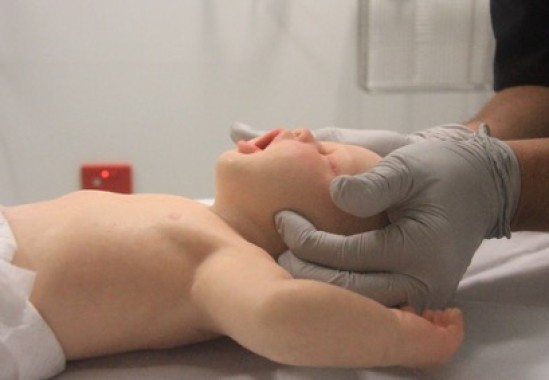
Figure 3: Jaw thrust in an infant
[Image courtesy of Children’s Health Queensland, licensed under CC BY]
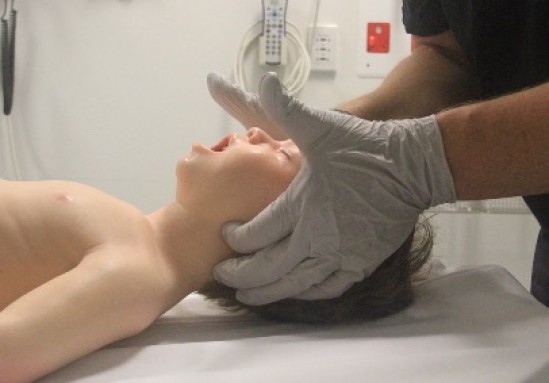
Figure 4: Jaw thrust in a child
[Image courtesy of Children’s Health Queensland, licensed under CC BY]
The patency of the airway may be assessed by observation of movement of the chest and abdomen during breathing (LOOK), listening for breath sounds from the mouth or nose (LISTEN), and feeling for air movement on the rescuer’s cheek (FEEL) (Figure 5). An indrawing of the chest wall and/or distension of the abdomen with each inspiratory effort without expiration of air implies an obstructed airway.

Figure 5: Look, listen and feel assessment
[Image courtesy of Children’s Health Queensland, licensed under CC BY]
Assessing breathing and starting ventilation

If breathing is absent or abnormal despite airway repositioning, ventilation should be commenced using mouth-to-mouth ventilation or bag-valve-mask ventilation (BVM) if available. Two initial ventilations should be provided before commencement of external cardiac compression.
ANZCOR recommends that rescuers provide ventilations and chest compressions for paediatric in-hospital cardiac arrest (IHCA) and out-of-hospital cardiac arrest (OHCA). If rescuers are unable or unwilling to provide ventilations, they should at least perform chest compressions4 [CoSTR 2015, strong recommendation, low-quality evidence].
Starting CPR

The circulation may be assessed by looking for movement, coughing or normal breathing.
Agonal respiration (gasping laboured breathing) describes an abnormal pattern of breathing (brainstem reflex) associated with cardiac arrest that should not be confused with normal breathing.
Healthcare providers may assess for a central pulse (carotid, brachial or femoral) but this should not delay CPR for more than 10 seconds. Palpation of a pulse (or its absence) is not reliable as the sole determinant of cardiac arrest and need for chest compressions.
Pulse check accuracy was the subject of an ILCOR 2020 PLS Taskforce evidence update.1 There was insufficient new evidence found to generate a change from the 2010 recommendation.5
ANZCOR suggests that in infants and children who are unresponsive and not breathing normally, healthcare providers should begin CPR unless they can definitely palpate a pulse within 10 seconds [CoSTR 2010, LOE III].5
To give chest compressions, the child should be placed on a firm surface and compression directed to the lower sternum.
Compression depth & release

A scoping review was conducted as part of the 2020 ILCOR PLS Taskforce process to identify new evidence since the 2015 guidelines regarding paediatric chest compression depth. No new published evidence was identified with this scoping review but the PLS Task Force did identify an ongoing large prospective observational international multicentre study on CPR quality using dual-sensor CPR feedback devices: the pediRES-Q study.9 As a result, treatment recommendations are unchanged from 2015.4
ANZCOR suggests that rescuers compress the chest by at least one third the anteroposterior dimension, or approximately 4cm in an infant and 5cm in a child [CoSTR 2015, weak recommendation, very low-quality evidence].
Method of compression

An evidence update was performed by the ILCOR 2020 PLS Taskforce1 to identify available evidence about different techniques for chest compressions of infants and children since the previous review was published in 2010. The evidence update identified several studies published after 2010, and the task force agreed that these studies suggest the need to consider conducting a systematic review. Until a new systematic review is completed and analysed by the PLS TaskForce, the 2010 treatment recommendation remains in effect.
- Infant: Chest compression for an infant can be performed with the two-thumb technique or two-finger technique [CoSTR 2010; LOE IV]. The two-thumb technique (Figure 6) is the strongly preferred technique for healthcare rescuers5 [Good Practice Statement]. With this technique, the rescuer’s hands encircle the chest and the thumbs compress the sternum. Care should be taken to avoid restricting chest expansion during inspiration. The two-finger technique (Figure 7) may be preferred by a single rescuer to minimise the transition time between chest compression and ventilation [Good Practice Statement].
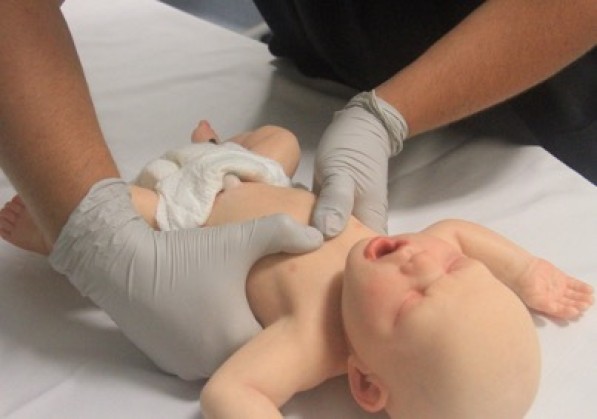
Figure 6: Two-thumb technique in an infant
[Image courtesy of Children’s Health Queensland, licensed under CC BY]
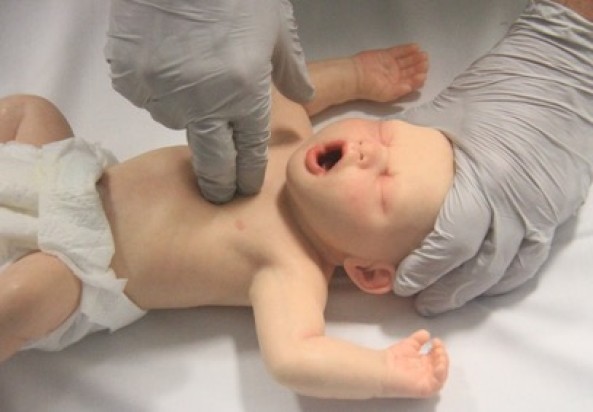
Figure 7: Two-finger technique in infant
[Image courtesy of Children’s Health Queensland, licensed under CC BY]
- Child: Chest compression can be performed with the ‘heel’ of one hand (Figure 8) or the two-handed technique (Figure 9) to achieve a compression depth of at least one third of the anterior-posterior (AP) diameter of the chest [Good Practice Statement].
There is insufficient evidence to make a recommendation for or against the need for a circumferential squeeze of the chest when performing the 2 thumb-encircling hands technique of external chest compression for infants.1 Whatever technique is employed, pressure over the ribs and abdominal viscera should be avoided.
Approximately 50% of a compression cycle should be devoted to compression of the chest and 50% to relaxation to enable full recoil of the chest wall.
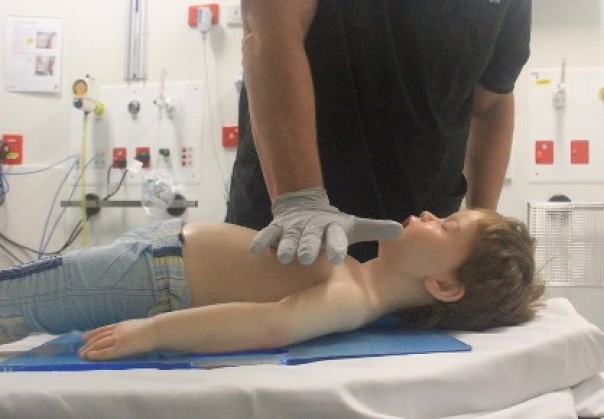
Figure 8: One handed technique in a child
[Image courtesy of Children’s Health Queensland, licensed under CC BY]


Figure 9: Two-handed techniques in a child
[Image courtesy of Children’s Health Queensland, licensed under CC BY]
Ratios and rates of compressions and ventilations

If rescue breathing is given by any type of mouth or mask technique, breaths should be delivered during a planned pause in chest compressions to allow adequate expansion of the lungs. However, to minimise the pause for lung inflation, chest compression should be recommenced during the expiratory phase of the second inflation.
BLS performed by health professionals unfamiliar with paediatric basic life support (PBLS) should follow the sequence of 30 compressions, then 2 ventilations (Refer to ANZCOR Guideline 8). The rate of chest compression is 100 to 120 per minute. With pauses for ventilation, the number of compressions given each minute will be less than 100. If 5 cycles are achieved in two minutes, approximately 75 compressions and 5 breaths per minute would be achieved.
Rescuers trained in PBLS should follow the sequence of 15 compressions, then 2 ventilations for each duty cycle [Good Practice Statement]. Compressions may be commenced first if equipment such as bag-valve-mask is not immediately to hand. Delivering 5 cycles per minute in this way will yield approximately 75 compressions and 10 breaths per minute.
Defibrillator (AED)

CPR should continue uninterrupted until help arrives with advanced life support equipment (including a defibrillator).
Appropriately sized defibrillator pads should be attached to the child as soon as available. The ideal pad size is not known, but the largest size available that still enables good separation between the pads should be chosen to enable good contact with the chest wall.
Ensure that all rescuers are clear of the patient while the defibrillator is delivering shocks or when the defibrillator is being disarmed.
Although a variable dose manual defibrillator is preferred, a semi-automated external defibrillator (AED) may be used for infants and children,1 provided it is able to differentiate shockable from non-shockable rapid paediatric rhythms.
For children older than 8 years, a standard AED with adult pads and dose may be used.
In children 1-8 years, an AED with paediatric pads and paediatric dose attenuation is preferred. If that is not available, a standard AED with adult pads and dose may be used.
An evidence update was conducted by the ILCOR 2020 PLS Taskforce to determine if there were any published studies about the use of AEDs for infants with OHCA. The evidence update identified insufficient evidence to justify a systematic review or suggest the need for a change to the 2010 treatment recommendation and as a result, the 2010 treatment recommendation5 is unchanged.
For treatment of out-of-hospital Ventricular Fibrillation (VF) or pulseless Ventricular Tachycardia (pVT) in infants, the recommended method of shock delivery by device is listed in order of preference below. If there is any delay in the availability of the preferred device, the device that is available should be used. The AED algorithm should have demonstrated high specificity and sensitivity for detecting shockable rhythms in infants. The order of preference is as follows:
- Manual defibrillator
- AED with dose attenuator
- AED without dose attenuator
When to stop CPR

Paediatric basic life support measures should continue until:
- Responsiveness and/or normal breathing return.
- Other health professionals arrive to either assist or take over resuscitative efforts.
- The rescuer becomes exhausted.
- The patient is pronounced deceased by the attending advanced life care team.
Recovery position

An unconscious infant/child who is not in cardiac arrest, whose airway is clear, and who is breathing normally, may be turned onto their side into the recovery position.
The recovery position aims to prevent airway obstruction and reduce the likelihood of fluids (saliva, secretions, blood or vomit) from entering the upper airway.
- Place the child in as near true lateral position as possible, with the mouth facing downwards, enabling free drainage of fluid.
- Stabilise the position if possible. In an infant, this may require a small pillow or a rolled-up blanket to be placed along the back to maintain the position and prevent rolling into a supine or prone position.
- Avoid pressure on the infant/child’s chest which may impair breathing.
- Reassess breathing regularly to recognise deterioration rapidly.
- Regularly change sides to avoid pressure points (eg. every 30 minutes).
In the setting of trauma, unconscious children should preferably have their airway kept open using a jaw thrust manoeuvre rather than being placed in a recovery position (to avoid spinal rotation). [Good Practice Statement]
Foreign body airway obstruction in children

References

- Maconochie IK, Aickin R, Hazinski MF, Atkins DL, Bingham R, Couto TB, Guerguerian AM, Nadkarni VM, Ng KC, Nuthall GA, Ong GYK, Reis AG, Schexnayder SM, Scholefield BR, Tijssen JA, Nolan JP, Morley PT, Van de Voorde P, Zaritsky AL, de Caen AR; Pediatric Life Support Collaborators. Pediatric Life Support: 2020 International Consensus on Cardiopulmonary Resuscitation and Emergency Cardiovascular Care Science With Treatment Recommendations. Resuscitation. 2020 Nov;156:A120-A155.
- Van de Voorde P, Turner NM, Djakow J, de Lucas N, Martinez-Mejias A, Biarent D, Bingham R, Brissaud O, Hoffmann F, Johannesdottir GB, Lauritsen T, Maconochie I. European Resuscitation Council Guidelines 2021: Paediatric Life Support. Resuscitation. 2021 Apr;161:327-387.
- Topjian AA, Raymond TT, Atkins D, Chan M, Duff JP, Joyner BL Jr, Lasa JJ, Lavonas EJ, Levy A, Mahgoub M, Meckler GD, Roberts KE, Sutton RM, Schexnayder SM; Pediatric Basic and Advanced Life Support Collaborators. Part 4: Pediatric Basic and Advanced Life Support: 2020 American Heart Association Guidelines for Cardiopulmonary Resuscitation and Emergency Cardiovascular Care. Circulation. 2020 Oct 20;142(16_suppl_2):S469-S523.
- Maconochie IK, de Caen AR, Aickin R, Atkins DL, Biarent D, Guerguerian AM, Kleinman ME, Kloeck DA, Meaney PA, Nadkarni VM, Ng KC, Nuthall G, Reis AG, Shimizu N, Tibballs J, Pintos RV. Part 6: Pediatric basic life support and pediatric advanced life support 2015 International Consensus on cardiopulmonary Resuscitation and emergency Cardiovascular Care Science with Treatment Recommendations. Resuscitation 2015: 95: e147-e168.
- de Caen AR, Kleinman ME, Chameides L, Atkins DL, Berg RA, Berg MD, Bhanji F, Biarent D, Bingham R, Coovadia AH, Hazinski MF, Hickey RW, Nadkarni VM, Reis AG, Rodriguez-Nunez A, Tibballs J, Zaritsky AL, Zideman D, On behalf of the Paediatric Basic and Advanced Life Support Chapter Collaborators. Part 10: Paediatric basic and advanced life support: 2010 International Consensus on Cardiopulmonary Resuscitation and Emergency Cardiovascular Care Science with Treatment Recommendations. Resuscitation 2010;81:e213–e259.
- Consensus on Resuscitation Science & Treatment Recommendations. Part 6, Paediatric basic and advanced life support. Resuscitation 2005; 67: 271-291.
- Safranek DJ, Eisenberg MS, Larsen MP. The epidemiology of cardiac arrest in young adults. Ann Emerg Med 1992;21:1102–6.
- Soar J, Maconochie I, Wyckoff MH, et al. 2019 International Consensus on Cardiopulmonary Resuscitation and Emergency Cardiovascular Care Science with Treatment Recommendations. Resuscitation 2019;145:95-150.
- Children’s Hospital of Philadelphia. Quality of Paediatric Resuscitation in a Multicenter Collaborative (pediRES-Q). https://www.clinicaltrials.gov/ct2/show/NCT02708134. Updated April 10, 2019. Accessed August10,2020.
About this Guideline

|
Search date/s |
ILCOR literature search details and dates are available on the CoSTR page of the ILCOR website (https://costr.ilcor.org) and the relevant CoSTR documents. |
|
Questions/PICOs: |
Are described in the CoSTR documents (https://costr.ilcor.org) |
|
Method: |
Mixed methods including ARC NHMRC methodology before 2017 and ILCOR GRADE methodology described in ILCOR publications since 2017. The guideline process includes involvement of stakeholders from member organisations of the ARC & NZRC, and peer review by members of the Australian and New Zealand Committee on Resuscitation (ANZCOR). Details of the guideline development process can be found on the ARC website at https://resus.org.au. |
|
Principal reviewers: |
Jason Acworth, Richard Aickin, Gabrielle Nuthall |
|
Main changes: |
This guideline is a new ANZCOR guideline focusing on provision of paediatric basic life support (PBLS) by health professionals responsible for the care of infants and children working in healthcare settings (pre-hospital or hospital). |
|
Approved: |
13 November 2021 |


